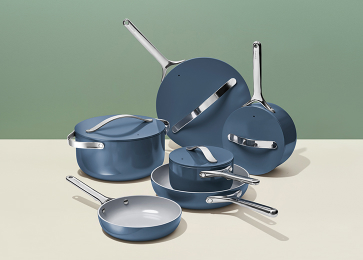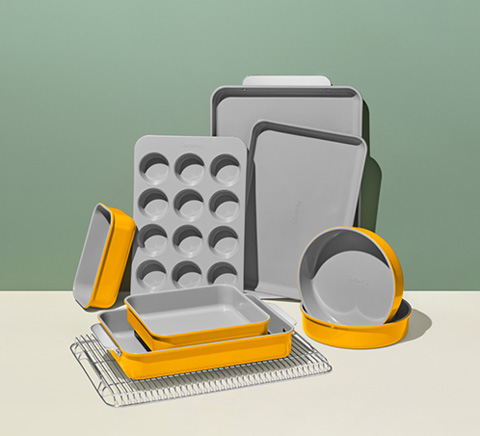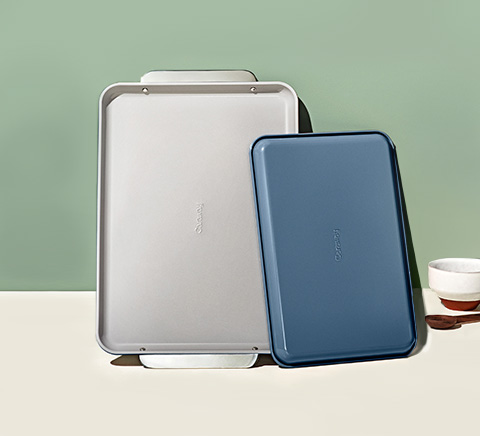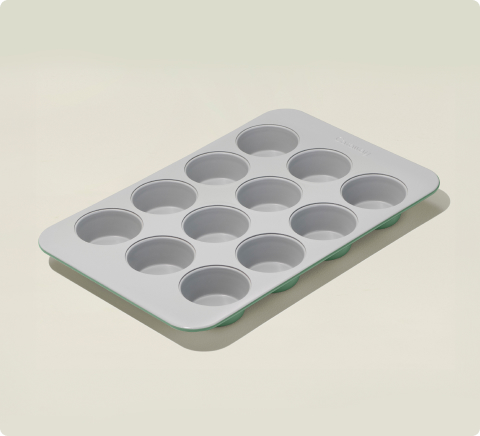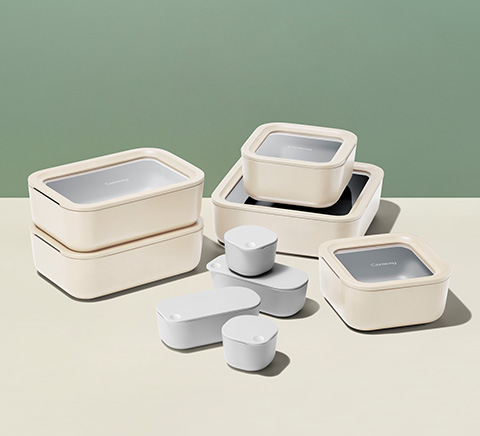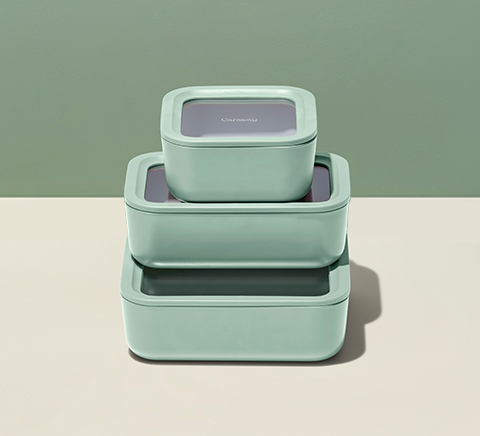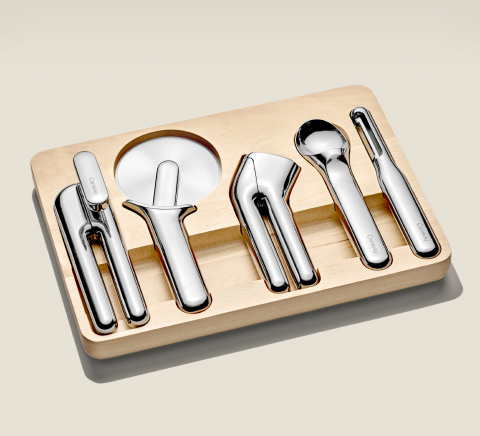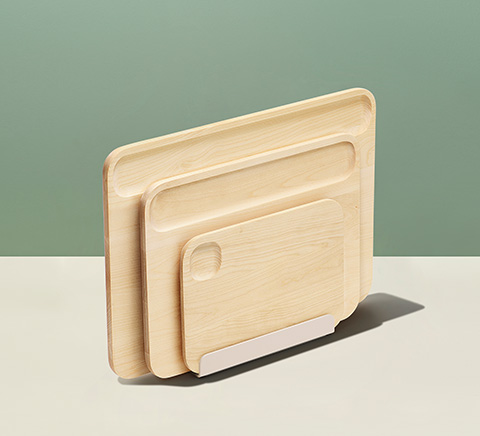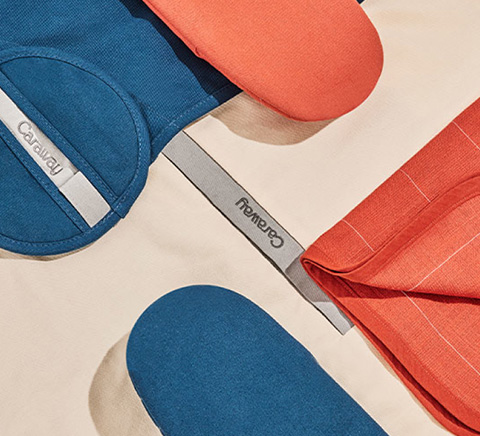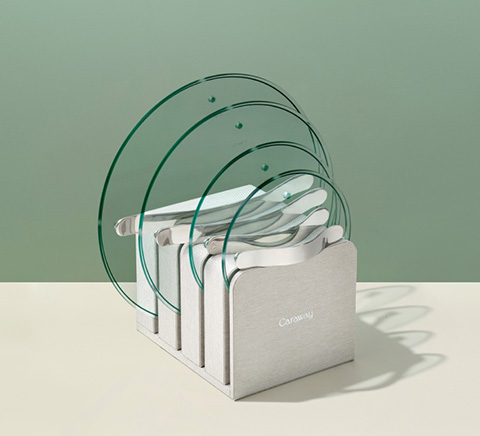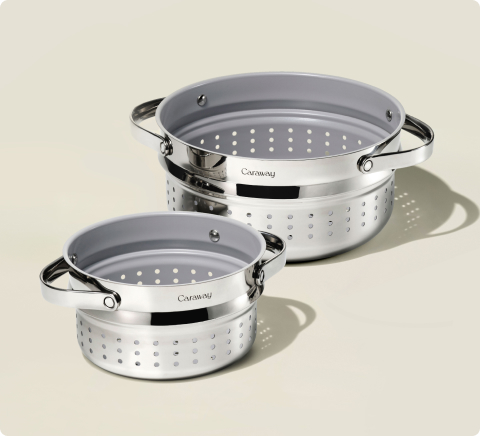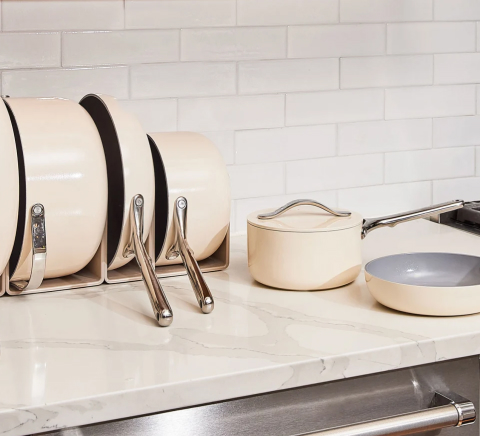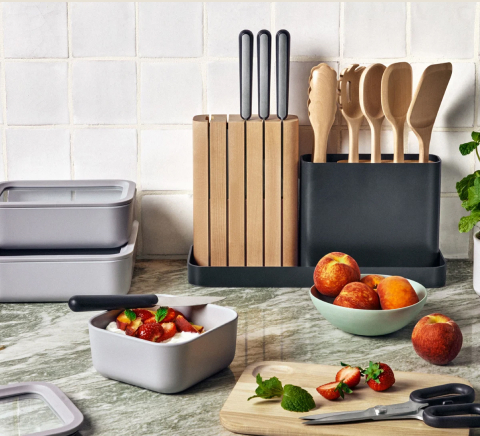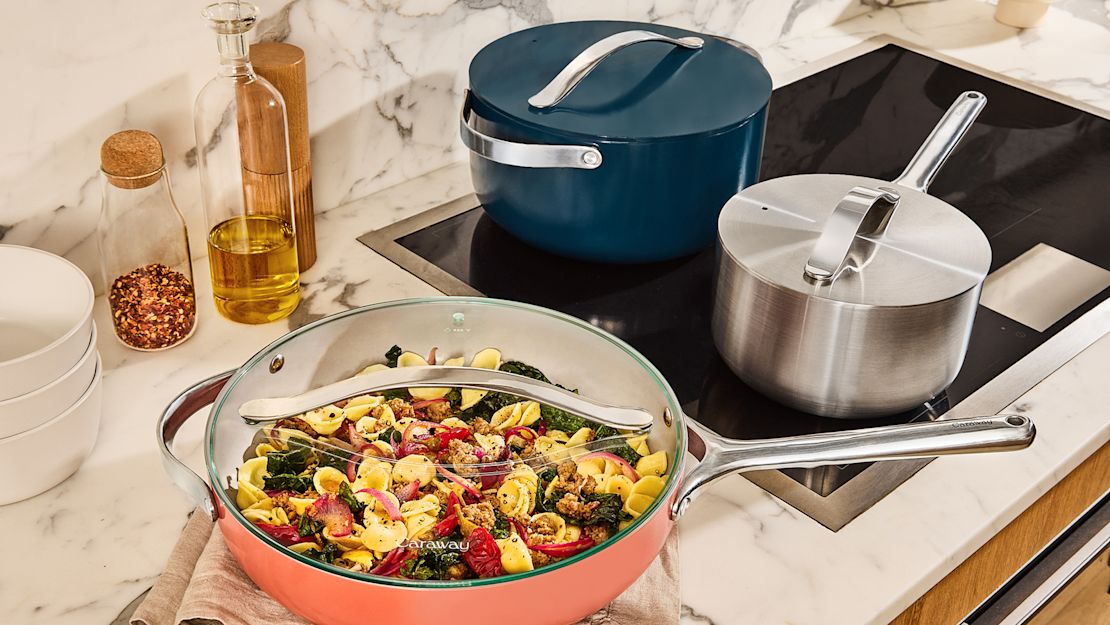At Caraway, we know that the right pan doesn’t just complement your culinary skills—it elevates them. That’s why understanding the difference between nonreactive and reactive pans is essential to mastering the art of cooking.
Nonreactive pans ensure that the dishes you pour your heart into remain true to taste and safe from unwanted chemical reactions.
What Is a Nonreactive Pan?
A nonreactive pan is designed with materials that won't chemically interact with the food you cook. These pans typically feature surfaces made from stainless steel, ceramic coatings, or glass---materials celebrated for their inert properties.
Unlike their reactive counterparts, nonreactive pans don't impart any metallic flavor to your food or succumb to discoloration when faced with acidic ingredients.
Why Does Reactivity Matter in Cookware?
The choice between nonreactive and reactive cookware can significantly impact your cooking for a few key reasons:
-
Flavor Preservation: Cooking acidic foods like tomato sauce or lemon juice in reactive pans can lead to a metallic taste, overshadowing the natural flavors of your ingredients.
-
Health Considerations: Reactive materials may leach metals into your food, posing potential health risks over time. Nonreactive pans eliminate this concern, making them a safer choice for everyday cooking.
-
Visual Appeal: Acidic dishes can cause discoloration in reactive pans, affecting their appearance and, over time, their performance. Nonreactive cookware maintains its look and functionality, dish after dish.
Choosing the right pan isn't just about the immediate cooking experience but about ensuring each meal is as safe, delicious, and visually appealing as intended.

What Are the Benefits of Nonreactive Cookware
Investing in nonreactive cookware benefits both your cooking and your health in several ways:
Versatility in Cooking
Nonreactive pans offer unparalleled flexibility, welcoming a range of culinary tasks from searing meats to simmering acidic sauces like cranberry reductions or pickling brines. This versatility means fewer limitations on your menu, encouraging culinary exploration and creativity.
Consistent Cooking Results
Thanks to materials like stainless steel and ceramic, nonreactive cookware provides even heat distribution. This ensures consistent cooking temperatures, reducing hotspots that can cause uneven cooking. Whether you're crafting a delicate hollandaise or a hearty tomato-based soup, nonreactive pans deliver reliable results every time.
Long-Term Durability
Nonreactive materials resist corrosion and wear, standing up to frequent use and cleaning without losing their integrity. This durability makes them a cost-effective addition to your kitchen, promising years of reliable service.
Ease of Maintenance
The smooth, non-porous surfaces of nonreactive cookware are resistant to staining and discoloration and make cleanup a breeze. Whether you're dealing with a sticky glaze or a burnt-on mess, these pans require less elbow grease to return to their original shine.
Healthier Cooking Options
Nonreactive cookware supports a healthier lifestyle by eliminating the risk of metallic leaching into foods, especially when cooking with acidic ingredients. By preserving the nutritional integrity of your ingredients, these pans ensure that every dish is as wholesome as it is delicious.

Aesthetic Appeal
Nonreactive cookware often features a sleek and modern design, adding a touch of elegance to your kitchen. Whether on the stovetop or hung as part of your kitchen décor, these pans contribute to the aesthetic value of your cooking space.
What Are Some Popular Nonreactive Materials?
Nonreactive cookware comes in a variety of durable and attractive materials, each chosen for its stability and superior cooking performance.
Some popular nonreactive materials include:
Stainless Steel
Our stainless steel pans offer a blend of durability and non-reactivity, making them perfect for cooking a wide range of dishes. Ideal for searing, sautéing, and simmering, they work well with acidic foods without any risk of flavor alteration or health concerns.
Ceramic
Ceramic coatings provide a non-stick surface without the chemical concerns associated with traditional non-stick pans. They're excellent for delicate cooking tasks and ensure that foods like cranberry sauce or rhubarb pie retain their intended taste, free from any unwanted metallic flavors.
Enamel-Coated Cast Iron
These pans combine the heat retention of cast iron with a protective enamel coating that prevents reactions with acidic foods. They're superb for long, slow cooking processes, such as braising or stewing, where consistent temperature and non-reactivity are key.
Glass
For baking and roasting, glass cookware is a great choice. Its completely non-reactive nature means it won't interact with any food, ensuring dishes like citrus-infused baked goods or vinegar-based marinades remain pure.

Which Cookware Should You Use Sparingly?
Now, let's dive into which cookware might not make the cut for every kitchen task. A quick look tells us that while variety spices up the kitchen, not all materials are suited for every culinary challenge---especially when acidic dishes enter the fray.
Aluminum Cookware
Aluminum is a highly conductive material, making it great for quick cooking and ensuring even heat distribution. However, it's a reactive metal that can impart an undesirable taste when used with acidic or highly alkaline foods.
While anodized aluminum reduces this reactivity, it's still wise to use these pans for neutral pH foods to maintain the integrity of your dishes.
Copper Pans and Copper Pots
Renowned for its excellent thermal conductivity, copper cookware offers precise temperature control, making it ideal for delicate sauces and confections. However, copper is another example of a reactive metal.
To counteract this, most copper cookware is lined with a nonreactive material, such as stainless steel. While this lining mitigates reactivity, the maintenance and cost of copper cookware make it a more specialized choice for the kitchen.
Cast Iron Pan
The beloved cast iron pan stands out for its superior heat retention and versatility, going from stovetop to oven effortlessly. Yet, its reactive nature means it's not the best choice for cooking acidic foods, as they can strip the pan's seasoning and lead to a metallic flavor in your meals.
For those looking for an alternative, our ceramic Dutch Oven offers a non-reactive, non-toxic solution for everything from stews to bread baking, combining the durability of cast iron with the safety and ease of ceramic coating.
How To Choose the Right Nonreactive Pan for Your Kitchen
Selecting the perfect nonreactive pan means considering your cooking habits and the types of dishes you most often prepare.
Here's how to make that choice:
-
Assess Your Cooking Needs: If you frequently cook acidic foods, prioritize pans made from materials like stainless steel or with a ceramic coating that offer versatility without reactivity.
-
Consider Heat Distribution: Look for pans that provide even heat distribution, such as those with an aluminum core surrounded by stainless steel, to ensure consistent cooking results across various recipes.
-
Opt for Durability: Choose cookware that stands the test of time. Our nonreactive pans are designed for longevity, combining the benefits of non-toxic, non-reactive surfaces with the robustness needed for daily use.
Care and Maintenance of Nonreactive Pans
Keeping your nonreactive pans in top condition not only extends their lifespan but also maintains their performance and appearance.
Here are key tips:
Regular Cleaning
After use, allow the pan to cool before washing with warm, soapy water to preserve the integrity of the non-reactive surface. Avoid using abrasive cleaners or scouring pads.
Proper Storage
Store your nonreactive cookware in a dry place, and if stacking is necessary, use protective layers to avoid scratches. Our cookware line comes with vertical storage to ensure your pans stay safe and effective.
Minimal Heat
Use medium to low heat settings to preserve the pan's surface and handle materials, ensuring a longer life for your cookware.
Who Should Consider Adding Non-Reactive Cookware to Their Kitchen?
Whether you're an adventurous home chef or someone who values simplicity in cooking, non-reactive cookware can be a transformative addition to your collection.
Here's who will benefit most:
-
Health-focused cooks seeking to avoid chemical reactions between food and cookware, ensuring meals remain pure and safe.
-
Culinary adventurers exploring a wide array of dishes, especially those involving acidic ingredients.
-
Efficiency enthusiasts desiring quick, even cooking and minimal cleanup.
-
Aesthetic appreciators looking to blend kitchen functionality with design, adding elegance to both cooking and presentation.
A Final Word
At Caraway, we're dedicated to enhancing your culinary experience with cookware as concerned about your health and safety as delivering unparalleled cooking performance. Our nonreactive cookware sets embody this commitment, ensuring every dish you create is delicious and free from unwanted chemical interactions.
Upgrade your kitchen with Caraway and taste the difference that thoughtful, high-quality cookware can make in your meals.
Sources:
What Is the Difference Between Reactive and Nonreactive Pans | Martha Stewart
How to choose eco-friendly kitchen tools | David Suzuki Foundation
